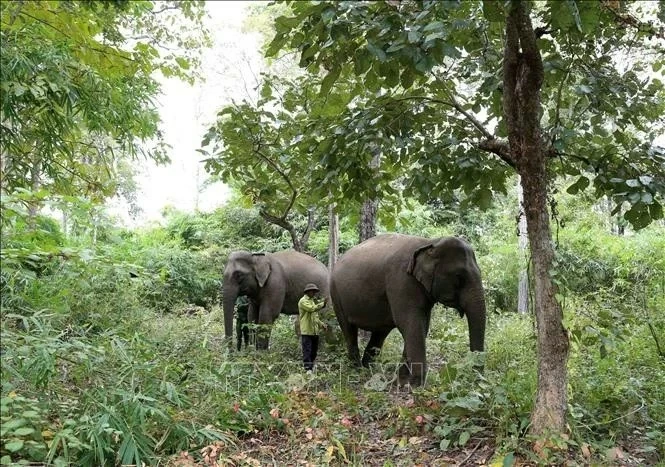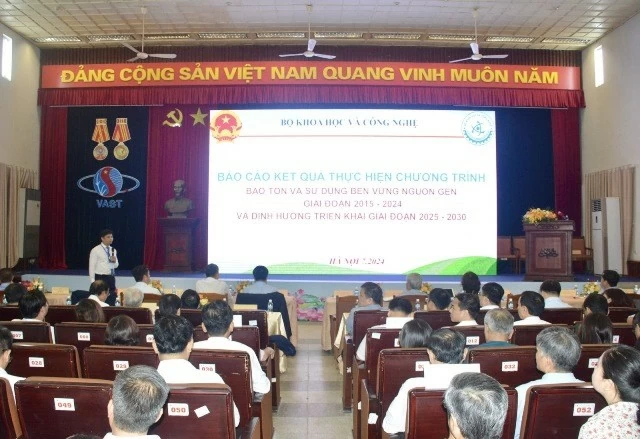
Measures sought to promote sustainable use of genetic resources: Conference
Latest
 |
| Measures sought to promote sustainable use of genetic resources: Domestic elephants are raised in a semi-wild form in the forest of KRongNa commune in Buon Don district of Dak Lak province. (Photo: VNA) |
The event provided a chance for managers, scientists, and experts to share their experience, pointed to difficulties and challenges in the work, and proposed solutions to enhance the efficiency of the programme.
Addressing the event, MoST Minister Huynh Thanh Dat said that in the 2015-2024 period, the programme has preserved over 80,000 endemic, precious, and rare genetic resources, which is an extremely valuable source of materials, serving the selecting and crossbreeding of new varieties with better productivity, quality and higher value.
Besides, researchers have initially evaluated nearly 56,000 genetic resources, many of which have been exploited and applied in production and life such as Ngoc Linh ginseng, mantis shrimp, “ho” fish (Catlocarpio siamensis), high-quality native rice, Vu Huong tree, and “lon i” (Vietnamese pot-bellied), he said.
 |
| Measures sought to promote sustainable use of genetic resources: On July 29, the Ministry of Science and Technology (MoST) organised a conference to evaluate the programme to use genetic resources sustainably in the 2015-2024 period and orient its implementation in the 2025-2030 period. (Photo: Ministry of Science and Technology) |
The Minister said that the programme covers living biological genetic resources requiring regular and continuous conservation and development. Therefore, it is urgent to build a legal corridor to continue implementing it in the next phase, ensuring there will be no interruptions.
Prof. Dr. Chu Hoang Ha, Vice Chairman of the Vietnam Academy of Science and Technology, said that the Fourth Industrial Revolution has shown the importance and role of indigenous genetic resources in socio-economic development based on the strengths of agricultural development and diversity of indigenous genetic resources.
Therefore, in the 2025-2030 period, it is necessary to continue to prioritise the development of in-depth basic research on genetic resources combined with traditional research on animal, plant and microbiological genetic resources, the expert held.
Participants at the event highlighted achievements that the programme has recorded, pointed to limitations in mechanisms, policy and management as well as professional activities of parties engaging in the programme so far, and proposed solutions to existing problems in the work.

















